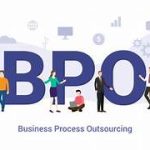How to Get a Job at Adobe: A Step-By-Step Guide for Success
Dreaming of joining the team at Adobe? You’re not alone. Adobe, known for creative tools like Photoshop, Illustrator, and Premiere Pro, is one of the most admired tech companies in the world. But landing a job there isn’t just about luck—it takes strategy, preparation, and a little bit of creative flair.
If you’ve ever wondered what it really takes to get hired by Adobe, this step-by-step guide breaks down the process and gives you actionable advice to help you stand out and get noticed.
Step 1: Understand Adobe’s Culture and Mission
Before diving into applications or interviews, take a moment to understand Adobe’s values and culture. Adobe isn’t just a software company—it’s a workplace that thrives on creativity, innovation, diversity, and integrity.
What Adobe Values:
- Genuine creativity and innovation
- Inclusivity and diversity in the workplace
- Collaboration and continuous learning
- Customer-centric solutions
You’ll notice that Adobe isn’t just looking for smart people—it’s looking for people who align with its purpose and values. That’s why cultural fit is just as important as your skillset.
📌 Tip: Visit Adobe’s careers page and read their mission, core values, and DEI (Diversity, Equity & Inclusion) initiatives. Familiarize yourself with Adobe’s employee stories on LinkedIn and YouTube to get a feel for what working there is really like.
Step 2: Choose Your Ideal Role
Adobe offers jobs in a wide range of fields including software engineering, product management, marketing, UX/UI design, data science, sales, and more.
Ask yourself:
- What role aligns with your skills and interests?
- Where can you provide the most value?
- What location or remote opportunity suits you best?
Common Job Categories at Adobe:
- Engineering & Technology
- Design & UX
- Marketing & Communications
- Sales & Business Development
- Customer Experience
- Internships & University Graduate Roles
Head to Adobe’s career portal and filter roles based on your interest and qualifications.
Step 3: Tailor Your Resume and Portfolio
Now that you know what role you want, it’s time to polish your application materials.
Your Resume Should:
- Be clean, clear, and no longer than 1-2 pages.
- Highlight measurable achievements.
- Use keywords from the job description.
- Emphasize experience with Adobe products (especially for creative or tech roles).
If You’re in a Creative Field:
A well-designed portfolio is non-negotiable. Whether you’re a designer, marketer, or UX researcher, show off your creativity using Adobe’s tools.
📌 Tip: Host your portfolio on Behance (owned by Adobe!)—it’s a great way to get noticed.
Step 4: Leverage Connections and Networking
Many Adobe employees say referrals significantly improved their chances. So don’t hesitate to tap into your network.
Where to Start:
- Use LinkedIn to find Adobe employees in roles similar to what you want.
- Reach out politely, ask for informational interviews, and show genuine interest.
- Attend Adobe-hosted webinars, virtual events, or creative conferences like Adobe MAX.
If someone refers you internally, your application may get prioritized by recruiters.
📌 Pro Tip: Join LinkedIn groups or online communities related to Adobe products or industry interests. The creative and tech worlds are smaller than you think.
Step 5: Apply Strategically
Once your resume and portfolio are ready, apply online through Adobe’s official career portal. Be sure to:
- Personalize each application.
- Include a thoughtful cover letter when possible.
- Keep a spreadsheet of the jobs you applied to, dates, and contacts.
Some roles may get hundreds of applications—so attention to detail and relevance matter.
📌 Important: If you’re applying for multiple roles, make sure each application is specifically tailored to that job. A generic resume won’t cut it.
Step 6: Prepare for Interviews (And Adobe-Specific Questions)
If you’re selected, you’ll go through several interview rounds, which could include:
- Recruiter Screen: Overview of your background and expectations.
- Technical or Skill Assessment: Coding tests, case studies, or portfolio reviews.
- Hiring Manager Interview: Deep dive into your role-specific skills.
- Panel Interviews: Meet multiple team members, sometimes cross-functional.
- Culture Fit and Behavioral Questions
What They’re Looking For:
- Passion for Adobe’s products or industry.
- Problem-solving skills.
- Collaboration and communication.
- Creativity in action.
💬 Sample Questions You Might Be Asked:
- “Tell me about a time you used creativity to solve a problem.”
- “How do you approach feedback or critique?”
- “What do you think about Adobe’s current product offerings? What would you improve?”
📌 Tech roles? Be ready for whiteboarding sessions or algorithm questions. 📌 Design roles? Be prepared to walk through your portfolio and explain your process.
Step 7: Show Your Passion for Adobe
Beyond technical skills, Adobe wants people who genuinely care about its mission.
How to Show It:
- Talk about how you’ve used Adobe products in your career or personal life.
- Mention specific Adobe projects, partnerships, or innovations you admire.
- Share your thoughts on the future of creativity, AI, or digital experiences.
Adobe prides itself on building the future of creativity—so let your enthusiasm shine through.
Step 8: Follow Up and Stay Engaged
After your interviews, send a thank-you email to each person you met. Make it personal, and refer to something you talked about.
Even if you don’t get the job, stay connected:
- Follow Adobe on LinkedIn and Twitter.
- Continue networking with Adobe employees.
- Re-apply in 6 months with an updated resume or improved skills.
Sometimes it takes a few tries. Don’t give up—many people who now work at Adobe didn’t get in on the first attempt.
Bonus: Internships and Early Career Opportunities
Adobe’s university programs are one of the best in the industry. If you’re a student or a recent graduate, check out:
- Adobe Internship Program
- Adobe Digital Academy (for career switchers)
- Adobe Creative Residency
These programs offer hands-on experience, mentorship, and often lead to full-time offers.
Final Thoughts: Getting a Job at Adobe Is Possible
Yes, it’s competitive. But that doesn’t mean it’s out of reach. With the right combination of preparation, passion, and persistence, Adobe could be your next workplace.
Recap of Your Action Plan:
- Understand Adobe’s culture and mission.
- Choose your ideal role.
- Tailor your resume and portfolio.
- Network and build genuine connections.
- Apply with purpose and precision.
- Prepare for thoughtful, creative interviews.
- Show your love for Adobe and what it stands for.
- Follow up, stay positive, and keep learning.
Success at Adobe comes to those who combine skills with passion, curiosity with creativity, and resilience with authenticity. If that sounds like you—go for it.
✨ Your dream job might be just one application away.

![Top 20 Highest Paying Government Jobs in India [Role, Eligibility & Salary]](https://getsarkarinaukri.in/wp-content/uploads/2025/04/th-5-2-150x150.jpeg)
